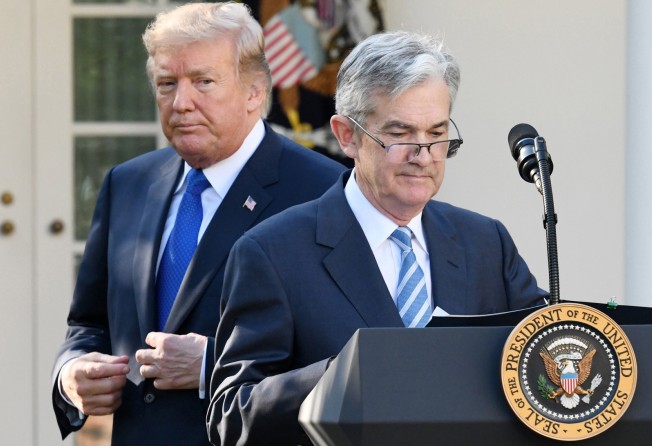The only problem our economy has is the Fed. They don’t have a feel for the Market, they don’t understand necessary Trade Wars or Strong Dollars or even Democrat Shutdowns over Borders. The Fed is like a powerful golfer who can’t score because he has no touch - he can’t putt!
— Donald J. Trump (@realDonaldTrump) December 24, 2018
Christmas ups and downs on Wall Street: goodbye to the era of cheap money, hello to volatility?
- Nicholas Spiro says US political risk is driving markets to such a degree that hopeful news about the Chinese economy failed to set off a rally. The danger is that the selling pressure might start to undermine confidence in the US economy

Remember the “America first” trade? That was the much-trumpeted investment strategy in the first nine months of this year which involved betting heavily on the outperformance of American financial assets. In equity markets, the trade worked wonders, with the benchmark S&P 500 index gaining more than 9.5 per cent, while the MSCI All Country World ex USA index, a gauge of global stocks outside the United States, lost nearly 3.5 per cent.
Yet, since early October, America first has come to symbolise an entirely different phenomenon: the return of dramatic volatility, which has contributed to the broadest losses across asset classes since the 1970s, according to data from Morgan Stanley.
A toxic combination of concerns about the impact of President Donald Trump’s trade offensive against China, fears of a hawkish policy mistake by the Federal Reserve and an escalation of political risk in Washington have turned America into the main source of turmoil in markets. The S&P 500, which on Monday suffered its worst Christmas Eve trading day on record, has dropped from a record high to the edge of a bear market – a peak-to-trough decline of at least 20 per cent – in the space of just 12 weeks.
In December alone, the index has fallen 10.6 per cent, its worst month in nearly a decade, according to data from Bloomberg. The sell-off has become much fiercer in the last few weeks because of a series of highly damaging actions on the part of the Trump administration. After the president made a ferocious attack on Fed chair Jerome Powell for raising interest rates, Treasury Secretary Steve Mnuchin spooked investors further by issuing an unusual statement stressing that America’s main banks had sufficient liquidity to cope with the sell-off. What is more, America’s government has been in a partial shutdown since last Friday.
The potentially dire consequences of these developments for asset prices are eclipsing all other market-moving events and are now the main determinant of sentiment. Not only is the independence of the world’s most important central bank under threat but the effectiveness and credibility of the US government’s response to a financial crisis is being called into question at a critical time for markets.
American political risk is driving markets to such a degree that even Beijing’s pledge last Friday to step up efforts to stimulate the Chinese economy failed to lift the gloom, despite the mounting concerns about the slowdown in China. The biggest threat is that the selling pressure on markets might take on a momentum of its own and start to undermine confidence in America’s economy.
For now, stock prices are disconnected from the performance of the economy. While interest-rate-sensitive sectors have come under strain, overall growth is robust. Manufacturing activity remains buoyant while confidence among American consumers and small businesses is close to its highest levels in decades.
Still, it would be wrong to pin all the blame for the current turmoil on Trump’s team. The reality is that many investors side with the president when it comes to the Fed. The central bank’s controversial decision last week to raise rates for the fourth time this year, while forecasting tepid inflation and weaker growth next year, has rattled markets. Trump’s assault on the Fed, although a menace in itself, has accentuated the risk of a policy blunder.
At the heart of the sell-off is the vulnerability that has plagued markets since financial conditions began to tighten early this year: the fear that the Fed-led withdrawal of monetary stimulus is ushering in a new market regime of heightened volatility and low returns. The losses across most major asset classes this year suggest investors are finally coming to terms with the end of the era of cheap money.
Yet, as growth in advanced economies slows, the scope for tightening policy diminishes. Bond investors no longer believe that the Fed will raise rates next year despite the central bank’s own forecast of two additional hikes, setting the stage for further turbulence in the coming months.
On Wednesday, the S&P 500 roared back after coming within points of entering a bear market, rising almost 5 per cent in its biggest daily advance since March 2009. However one of the main triggers for the rally was a statement from one of Trump’s top advisers, insisting that Powell is safe in his job.
America’s new-found role as the generator of volatility may have only just begun.
Nicholas Spiro is a partner at Lauressa Advisory